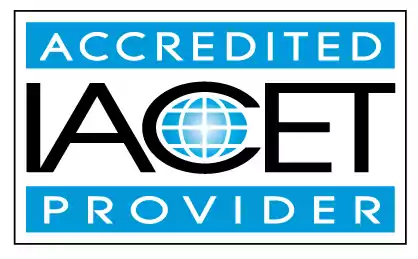Describe the role of a CDA home visitor and include examples of home visitors.
Learn about the important role of a CDA home visitor in supporting families with early childhood education. Discover how home visitors can ensure their safety while visiting homes, with examples of effective practices. Explore the valuable impact of these professionals within child care centers and the broader community.Trainings incorporating this outcome
CDA Subject Areas
Proficiency Level
States
Alabama (2) Alaska (2) Alberta (2) Arizona (2) Arkansas (2) Australia (2) California (2) Colorado (2) Connecticut (2) Delaware (2) District of Columbia (2) Florida (2) Georgia (2) Hawaii (2) Idaho (2) Illinois (2) Indiana (2) Iowa (2) Jamaica (1) Kansas (2) Kentucky (2) Louisiana (2) Maine (2) Manitoba (1) Maryland (2) Massachusetts (2) Michigan (2) Minnesota (2) Mississippi (2) Missouri (2) Montana (2) Nebraska (2) Nevada (2) New Hampshire (2) New Jersey (2) New Mexico (2) New York (1) Newfoundland and Labrador (2) North Carolina (2) North Dakota (2) Nova Scotia (1) Ohio (2) Oklahoma (2) Ontario (2) Oregon (2) Pennsylvania (2) Prince Edward Island (1) Puerto Rico (2) Quebec (1) Rhode Island (2) Saskatchewan (2) South Carolina (2) South Dakota (2) Tennessee (2) Texas (2) Thailand (1) United Kingdom (1) Utah (2) Vermont (2) Virgin Islands (1) Virginia (2) Washington (2) West Virginia (2) Wisconsin (2) Wyoming (2)
120 hours courses
5 hours courses
Related Outcomes
- Identify the components of the CDA Home Visitor Professional Portfolio and strategies for completion.
- Identify the ways Home visitors take on the role of coach or mentor with families.
- Demonstrate understanding of how home visitors can stay safe while visiting homes.
- Identify the importance of documenting the home visitor's work with the family.
- Give examples of ways for families to be included and represented in the classroom, even when they are not physically present.
- Identify Home Visitor program models and characteristics of effective models.
- Define strategies for prevention of obesity in children including the role of the educator and why prevention is important.
- Describe the rights of children and families and their relation to home visiting.
- Give an example of an environmental blue print for shared and permanent spaces, including outdoor spaces
- Identify ways home visitors work across the child welfare continuum.
- Describe infant/toddler nutritional needs
- Describe Piaget’s sensorimotor and preoperational stages of cognitive development.
- Give examples of tools that record and communicate critical information to other staff and families.
- Give examples of strategies in responding to typical child care situations.
- Identify the role of play in the early childhood environment
- Describe common myths and misconceptions about time management in child care.
- Identify the role of family in society
- Give examples of appropriate sensory activities for preschool-age children.
- Describe ways to analyze classrooms for an anti-bias approach.
- Give examples on how to choose, plan, and conduct a cooking project in an age-appropriate and organized manner.
Related Articles
- Home Visitor CDA Subject Area 7
- Home Visitor CDA and the Essence of Being a Home Visitor
- Online Home Visitor CDA Training with ChildCareEd
- Navigating the Path to a Child Development Associate (CDA) Credential in Louisiana
- The CDA Home Visitor Credential
- CDA Home Visitor Training Options from ChildCareEd
- How Cultural Influences Shape Child Development
- 10 Mistakes Candidates Make When Building Their CDA Portfolios
- 🤯 Why Is This Child Acting Out All of a Sudden?
 12 CEUs
12 CEUs